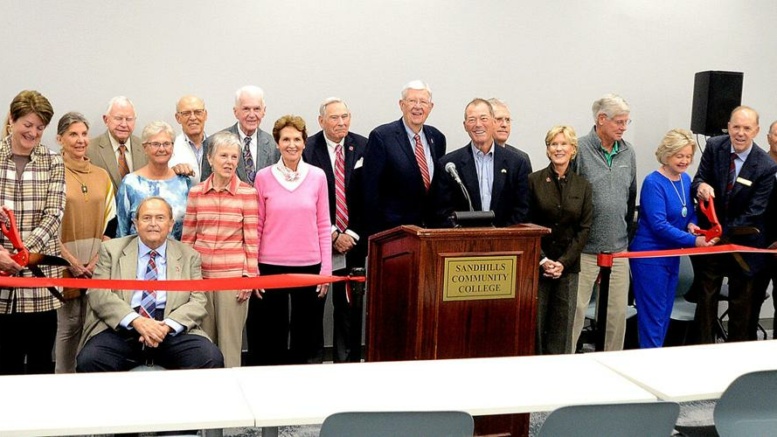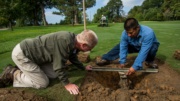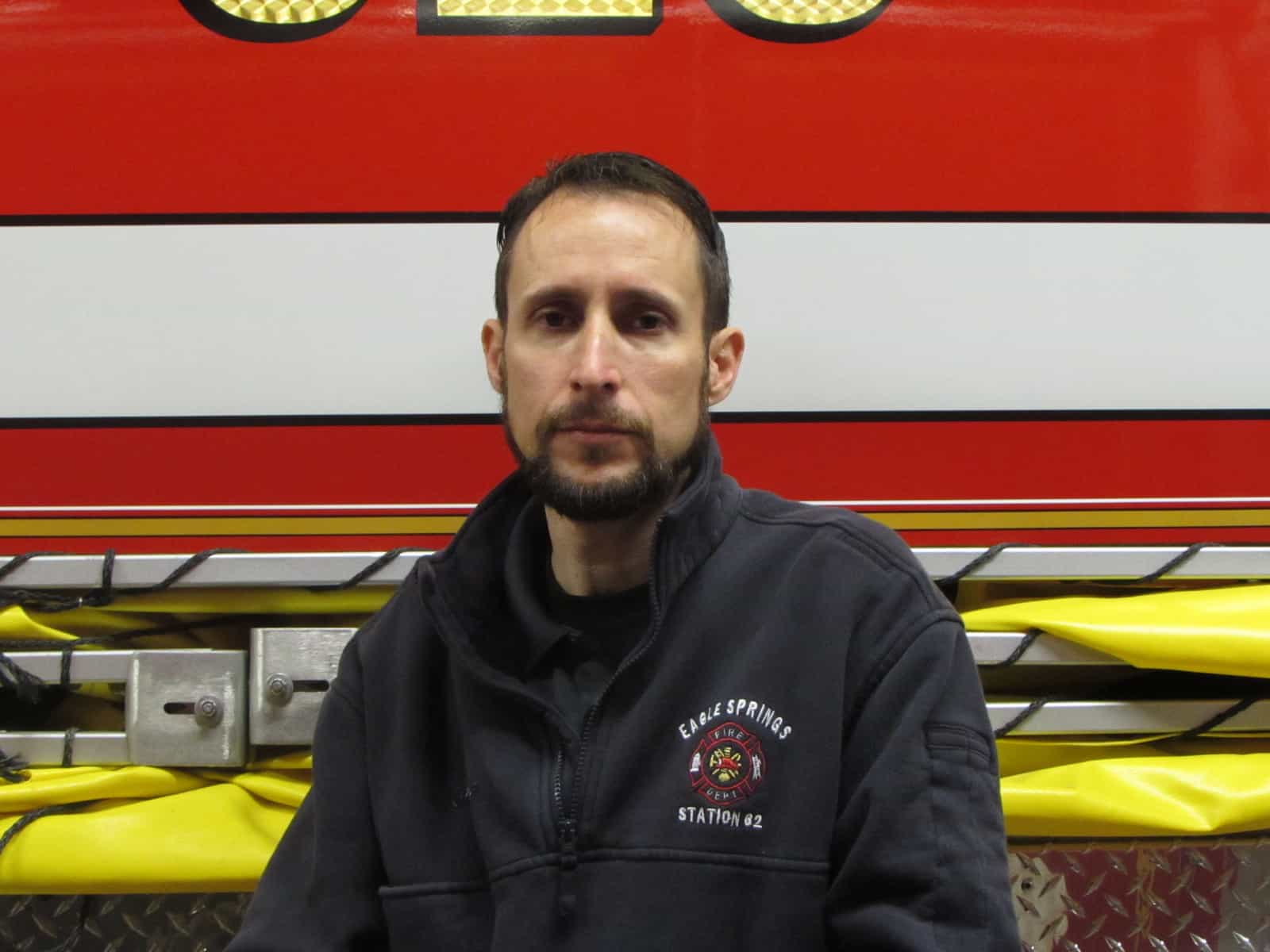BY MARY KATE MURPHY || Insider Staff Writer
The final project to be built with construction bonds that Moore County voters approved in 2018 is now officially complete.
Foundation Hall makes for a striking addition to Sandhills Community College’s campus off Airport Road. But visitors who make their way through the porticoed entrance will find that what goes on inside its brick-and-concrete walls reflects a different kind of investment.
College trustees, faculty and school foundation members gathered in the new building’s 250-seat lecture hall to dedicate the new facility on Wednesday morning, along with county commissioners, healthcare executives and supporters of the $20 million bond issue that helped build it.
Ground broke on the 35,000-square-foot building in the spring of 2021. Contractors Bordeaux Construction wrapped up the substantive work in time for Sandhills’ nursing department to start the fall 2022 semester in its new home.
Combined with renovations to the program’s existing space in Kennedy Hall, Foundation Hall rounds out 84,000 square feet of space devoted to health sciences: educating new nurses, emergency medical services workers, lab and surgical technicians and other specialties vital to the medical industry.
Named for the college’s fundraising arm, Foundation Hall will allow Sandhills to double the number of nursing students it enrolls and produce more graduates to staff FirstHealth Moore Regional Hospital, Pinehurst Surgical Clinic and other medical facilities throughout the region.
“That word is such an important word. When you look around this room you see a lot of the people who are responsible for laying the foundation for our future,” said Sandhills President John Dempsey.
Longtime trustee Larry Caddell nodded to everyone involved in the project, from the volunteers on the 2018 School-College Bond Campaign, to the nursing faculty who laid the floor plans for a facility that would expose students to an authentic-feeling clinical environment from Day One, to the county commissioners who opened the door to putting the issue on a ballot.
“Being a former county commissioner myself, I know how hard it is to sit up there and make those decisions that affect people forever,” he said. “And the county commissioners made a decision to put us on the ballot so we could build this building. Long after each one of us in this building are gone, it’s still going to be here creating nurses for FirstHealth and for many other facilities.”
Dempsey credited Stan and Jean Bradshaw, whose own foundation made up the difference between $20 million in public funding and the overall project budget, for christening the facility Foundation Hall.
“It was Jean and Stan who came up with the idea of calling it Foundation Hall, because it celebrates the philanthropy that has made this college a unique place,” said Dempsey.
“What has happened here is we’ve been able to build a $30 million facility for $20 million and that’s the reality.”
But state-of-the-art facilities are only half of the equation. Plaques throughout the building honor individual donors who outfitted the nursing skills lab and simulation center.
The lab, nearly as large as the auditorium, is where first-year nursing students learn sterile techniques and learn to place IV lines, catheters and nasogastric tubes. They do that using highly realistic training manikins, a dozen of which are arranged around the lab — each in its own bed in a realistic hospital setting.
The simulation center includes four suites, each replicas of a functional hospital room, with more sophisticated manikins that can be programmed to present with a variation of symptoms: diabetes, stroke, even postpartum hemorrhage. They can be assessed for heart rate, oxygen levels, blood pressure, even capillary refill, and students can practice common procedures like administering fluids or evaluating a newborn.
When students practice handling crises, instructors playing the part of the “patient” can speak through the manikins from their stations in the control room. Through one-way glass and cameras, they observe each student’s every move to discuss after the simulation.
“Before the simulation we talk about what’s going to happen,” said Kira Campbell, a second-year nursing student from Aberdeen. “Our teachers always tell us that they believe we are smart, that we are willing to learn, and that we are going to take all of the opportunities we can to learn and that they believe in us that we will learn.”
The simulations are designed to teach not only the correct medical procedures, but how to work under pressure and address their patients’ emotions while also reacting to their physical symptoms.
“We cannot say ‘You’re going to be fine.’ We don’t know that,” said Campbell.
“A big thing that we’re learning right now is therapeutic communication, which is nice to practice in simulation: get on their level, give them eye contact, be honest and let them know what you can.”
When she finishes her associate’s degree in nursing, Campbell will continue directly to UNC-Pembroke through the Regionally Increasing Baccalaureate Nurses initiative. She’ll have the opportunity to earn a bachelor’s with just one more year of study — which she can finish online while working as an RN.
As Sandhills is able to accept more students like Campbell and send them on to higher education and careers in healthcare, Foundation Hall is expected to add $1 million to the local economy each year through those professionals’ added income.
“We’re so proud of our health and nursing programs here at Sandhills, and of course of the unbelievable facilities that we now occupy,” said George Little, longtime chair of the college’s board of trustees.
“We’ve got a tremendous medical facility here, and we’re going to provide the nurses for it, and that’s the most important thing.”
Contact Mary Kate Murphyat (910) 693-2479 or mkmurphy@thepilot.com.












